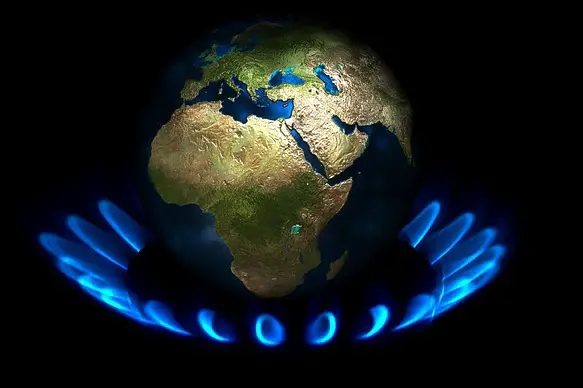Newly released data from the London Intercontinental Exchange (ICE), showed that on Wednesday, natural gas prices in the EU reached the highest levels seen since mid-June.
Gas futures for September delivery at the Dutch TTF hub rose to an intra-day high of over €43 ($47) per megawatt-hour in household terms, an increase of almost 40% over the previous close.
Prices gave up their gains later in the session, and extended losses on Thursday. By about 13:00 GMT, contracts were trading at roughly €38 per megawatt-hour.
According to analysts, the jump is attributable to a potential strike at Australian liquified natural gas (LNG) facilities, among the top three exporters alongside Qatar and the United States. Media reporting indicated that Australia’s Woodside Energy Group and Chevron LNG projects saw workers vote on Wednesday to strike, in pursuit of higher salaries and increased job security. The strike is set to begin as early as next week at five LNG facilities.
Zongqiang Luo, a gas analyst at energy consultancy Rystad Energy, said in an interview with CNBC that roughly half of Australia’s LNG exports would be affected by the strike.
Luo said, “Looking ahead, we expect the bullish outlook for gas prices to continue with fewer LNG imports to Europe.”
With storage facilities in Europe filled to about 88% of capacity, and governments still seeking to completely fill them prior to the winter heating season, a significant reduction in Australian exports would lower the supplies of LNG globally and increase competition for the super-chilled fuel. A resulting bidding war between Asia and Europe, each seeking to attract LNG cargoes could drive prices even higher.
In a note to Reuters, analysts at RBC Capital Markets said, “The loss of contracted volumes from Australia would likely see countries like China looking into the spot market for replacement cargoes, pushing up not only JKM prices (the Asian LNG benchmark) but also European gas prices in another potential price war, as we have seen today.”
They warned that if a potential strike were to occur at the same time as scheduled maintenance of gas fields in Norway, the EU’s largest gas supplied, the situation could become considerably worse. Later in August, roughly 1.5 billion cubic meters of production will be taken offline for maintenance, and later in September, more than 2.5 billion cubic meters will be taken offline.


